- Read part one from RAIL 771: Viva Vivarail's D-Train transformation
"Design is about common sense. It’s a journey between two points, and you want to make sure you get there as efficiently as you can.”
So says Neil Bates, director of Creactive Design. It’s a comment that fits rather neatly into whether you’re talking about design or the railway - or in this case, both.
Creactive, based in Leamington Spa, has worked on a host of railway projects over the years, including the modernisation of DB Regio Tyne & Wear’s Metro interiors, new designs for the interiors of Irish Rail’s Class 22000 fleet, and the Class 168 refurbishment for Chiltern Railways.
The latter was a project carried out when Adrian Shooter was Chiltern’s chairman. In his new guise as chairman of Vivarail, Shooter is again working with Bates (who is also a director for Vivarail), this time on the radical London Underground D78-Stock diesel conversions - the D-train.
In RAIL 771, Shooter told RAIL how the project could ease the shortage of diesel multiple units (DMUs) in the UK. But plugging that gap is merely the reason the idea came about in the first place - now Vivarail is all about providing a “new train”, with passenger experience at the heart of the design.
And Bates is confident that the D-train will do just that: “If we do our jobs properly from the customer-facing perspective, they will like them because they won’t see any difference between those and the new trains.”
That’s going to come down to Vivarail creating the right train environment for the passenger. Bates and his team have a lot of experience understanding passenger requirements and priorities, and in designing the D-train interiors, he says that it is very much about “early buy-in from the TOCs and their customers, to define what they want”.
So Vivarail is not providing an ‘off-the-shelf’, ready-made product?
“We have about 12 or 15 variants of the D-train, broken down into three main ones.”
CommuterRail, CountryRail and CityRail versions allow the design to be tailored to the type of route on which the train is to be used. Routes with frequent stops and high passenger numbers will need different interior layouts to those where passengers tend to make longer journeys and therefore want more space and comfort.
Creactive is exploring a range of options for seating and layouts in the train, to allow TOCs to choose specifically how they want to cater for their passengers.
Says Bates: “In the middle of the train, where we’re blocking doors off, we’re putting seat bays in. With the little nooks and crannies that we have left - instead of building luggage racks (because these trains don’t have them), we’re putting spaces in that would be suitable for a folding bicycle or a baby stroller. Importantly, it doesn’t obstruct the vestibule.”
This doesn’t necessarily mean that every D-train would have this type of space built in, but it is an example of the innovative solutions being worked on to provide ‘building blocks’ from which TOCs can pick. And they are at an advanced stage in development…
“They’re all ready to go. We’ve done the preliminary modelling. We haven’t put them on the train yet because we wanted to talk to the TOCs. They’re now looking at the building blocks. There are one or two more blocks we have left to visualise before we put them on the vehicle, but at that point the interior starts to come together.”
Bates explains the importance of not designing just for the sake of design - practicality is a vital component of the decision-making.
“We’re not using anything that is not fit-for-purpose. Everything that goes into that train has to be fit-for-purpose, in as much as fire, smoke and crashworthiness is concerned. And that is why the supply chain is so important to us, because everything we use must be approved for use on the railway.”
But even though it’s a necessity, complying with regulations is not the first priority for the designs:
“It’s easy, providing you put the customer to the head of the queue. If you start worrying about fire and smoke first, you’ll end up doing certain things. Put the customer first, identify their wants and needs, and put everything after it. They don’t need to know that it doesn’t burn and it doesn’t kill you - that’s my job, that’s hidden.”
The space available on the trains comes down to the type of interior layout chosen and the formation of the seating. Again, this is something for which Creactive is working on several versions.
Says Bates: “The first example is a good comfortable metro and inter-urban seat. All of the aisle-side seats can become priority seats . We’ve patented that. It saves a lot of effort and time, and makes it easier to get in and out of the seat. It creates passing places, too. You can wheel baggage into the space.”
The cheaper version of the interiors that Creactive has mocked up still includes table spaces, however. Why is that so important?
“There are a number of benefits to a table. It demarks a space. You can work on it - if you can work on a table, it might influence whether you travel on a train or not. And from the TOC’s perspective, they can sell more tea and coffee.”
The third version recycles some of the pre-existing arrangements in the D78-Stock.
“This version is a work in progress,” says Bates. “We take the original seats and we turn them around . Because we have an awful lot of these seats! I’d rather use them than throw them into landfill. The headrest is still a little bit too far back, and we need to change the shape and form of it.
“We’ve started with the worst condition, and now we’re starting to improve it. But the benefit of this type is that we are giving the standing customer something which they don’t get at the moment. You can put your bike and your helmet in there, we’re going to put umbrella hooks on it. We will start to sculpt the space and make it much more freely accessible.”
Creactive will have more of these trial bays of seats made, including some with windows to display more of the possibilities.
“We’re working on a choice of finishes for the flooring, too. We’ve been trundling bicycles and baby buggies across it to make sure that it works.”
Bates explains the importance of real-world testing on any materials being used, to make sure they provide the level of resilience required once they’re in service.
But there are also other factors to take into account when choosing materials. Colour is important for PRM-TSI requirements, with contrasting colours a necessity.
And one of the types of flooring being tested weighs less than the others, but still meets all the fire requirements, so the designers are particularly taken with it. “If it saves me some weight, I’m really interested. Because even though they’re light vehicles, I’d rather spend weight on customers than floors,” says Bates.
How does Creactive really know if the layouts it has designed will work in practice?
“The way we would normally do this is keep you sitting for 15 to 20 minutes, and we would film it. At the end of it we establish how much you’re squirming around.
“That’s the acid test of how comfortable a seat is - what your body is doing and how you respond. We’ll give you a cup of coffee, give you a sandwich, something to read. And that’s how we do customer research.
“We can put the layout mock-up onto a truck, get it into a railway station in about 20 minutes, put some pop-ups behind it, and run a couple of thousand passengers through it. And we get absolutely wonderful feedback.
“And the most important thing is that we put the youngsters in our team out there talking to the customers, because nothing sharpens up a designer better than dealing with the people who are complaining about their design. It really does give them an edge.”
One of the major issues regarding passenger comfort is whether there will be provision for a toilet.
Says Bates: “The trains have multi-functional areas that allow you to include a fully PRM-TSI-compliant toilet. We can even put a toilet on a two-car train . We’re putting a mock-up together at the moment for a toilet that’s already used on the railway.”
Measuring that comfort level for passengers once a train has been in service is vital for the team to discover if they really got it right.
“The Mk 3s that we renovated for Chiltern received a 99% user rating for space, comfort, leg-room - the whole ambience of the vehicle. That’s the highest the survey has ever done from Passenger Focus ,” says Bates.
But clearly he is never satisfied until he reaches perfection. He jokes: “It shows we have to work harder to beat it.”
Bates says he thinks that rating is particularly high because “the crew on those trains are superb”.
He adds: “They really work hard. They work their tails off. But they can only work their tails off because we worked with the crew to find out what they need in order to do their job. That’s another part of our job - to work closely with the train crew to find out what their job is and then help them to deliver it.”
This is also important for the drivers - the entire cab on the D78 donor train is being stripped, and replaced with a new, more ergonomic ‘office’ for the driver.
“That office is the most important seat on the railway,” says Bates. “It has to be fit-for-purpose, and the driver has to leave his desk at the end of the day fit to work. We can’t put anything in the way that makes it difficult. The desk is a little bit longer to improve driver safety. That means that in the event of an incident, the driver will not hit the windscreen.”
Safety is an important aspect both for Bates and Vivarail Chairman Adrian Shooter. There is no regulation that says the D-train will need additional strengthening, because the D78-Stock is already approved to run on the railway (so the new train benefits from its ‘grandfather rights’). But Shooter says that the team has still chosen to do it:
“We looked at what the actual risks are at level crossings over the last ten years or so, and we’re protecting the driver and anyone else that’s in the cab against those risks.”
Bates elaborates: “We’re re-engineering the front end to improve the survivability of the space. We’re putting an obstacle deflector down below - we’ve done the research into the number of accidents that this train is likely to be at risk from (mainly on level crossings and rural environments).
“The front door of the vehicle is being replaced with a big crash structure. Structural steels will be bolted through the floor, so effectively we’re transforming the load-bearing characteristics to the centre of the vehicle. We’re putting in additional strengthened hoops, and there will be metal in front of the driver - so, should the train hit a falling tree or something of that order, he’s going to survive it. Our view is very firm on this - if this train hits something, the driver is walking away from it. It’s not going to be a danger.”
Both at the Vivarail site at Long Marston and at Creactive’s Leamington Spa studio, the pace of work will accelerate over the coming weeks to get a prototype train ready to run on test at Long Marston by about July.
The plan is to invite people to come and sample the train and offer their thoughts on it, before work begins on production models in September, with a view to the first being ready to sell by the end of the year.
The D-train is like the ultimate up-cycling project. It’s no different to taking a tired and worn piece of old furniture that’s still structurally sound, giving it a deep clean, replacing all the broken and outdated bits, and calling it ‘shabby chic’. But that’s become a trendy, fashionable and cost-effective solution that gives new life to unloved objects. The heritage of those items makes them special and desirable. There’s no reason why the same principle cannot apply to a train.
- This feature was published in RAIL 771 on April 1 2015
- Read part one from RAIL 771: Viva Vivarail's D-Train transformation

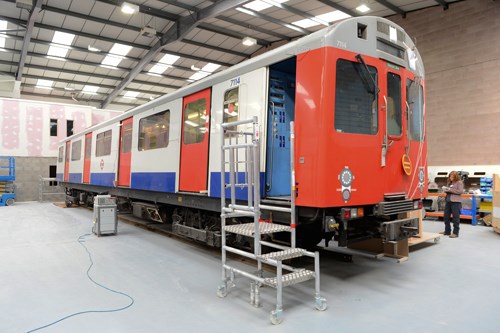
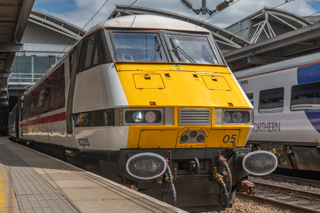
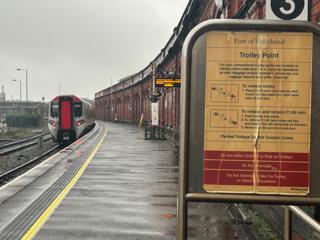
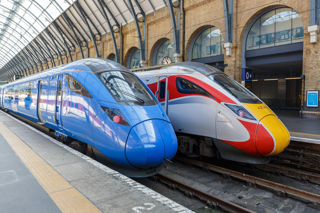








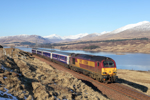


Login to comment
Comments
No comments have been made yet.